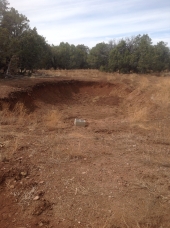
 3
3




 1
1




 1
1




"We cannot segregate the human heart from the environment outside us and say that once one of these is reformed everything will be improved.." --Baha'I Faith
 2
2




“There are no words to express the abyss between isolation and having one ally. It may be conceded to the mathematician that four is twice two. But two is not twice one; two is two thousand times one.”
― G. K. Chesterton
 1
1




"We cannot segregate the human heart from the environment outside us and say that once one of these is reformed everything will be improved.." --Baha'I Faith
 1
1




Hannah Rishel wrote:Thank you Malek. I've written up part one of attempting gleying small ponds in southwest Washington, and will try to download, upload, or attach this saga. The link is:
https://docs.google.com/document/d/1Ypcc8_C0y7d0ArVQDW0b3VwNCDwi4QQIsTcuUKle5aE/edit
If this doesn't work, I'll need to learn how to add a Google Doc....
“There are no words to express the abyss between isolation and having one ally. It may be conceded to the mathematician that four is twice two. But two is not twice one; two is two thousand times one.”
― G. K. Chesterton




"We cannot segregate the human heart from the environment outside us and say that once one of these is reformed everything will be improved.." --Baha'I Faith




Moderator, Treatment Free Beekeepers group on Facebook.
https://www.facebook.com/groups/treatmentfreebeekeepers/









Iterations are fine, we don't have to be perfect
My 2nd Location:Florida HardinessZone:10 AHS:10 GDD:8500 Rainfall:2in/mth winter, 8in/mth summer, Soil:Sand pH8 Flat




Hannah Rishel wrote:https://docs.google.com/document/d/1Ypcc8_C0y7d0ArVQDW0b3VwNCDwi4QQIsTcuUKle5aE/edit?usp=sharing
I hope this works. Hannah Rishel
“There are no words to express the abyss between isolation and having one ally. It may be conceded to the mathematician that four is twice two. But two is not twice one; two is two thousand times one.”
― G. K. Chesterton




"We cannot segregate the human heart from the environment outside us and say that once one of these is reformed everything will be improved.." --Baha'I Faith
 1
1




Dirk Dorme wrote:I would like to install a 'natural' pond, using clay and gleying it with ducks. Aka, let them 'seal' the pond by letting the ducks drop their manure to block the water from leaking. Now, that is the theory. I would not like to install a pump, simply dig a whole, add some clay, gley it and move along.
I will install the pond in a section where it would not bother too much that it is not a clear pond, however I do wonder whether the quality of the water will not be very very bad due to the manure of my ducks. Aka, will the nitrate and the rest not build up massively and thusly poison my ducks? And suppose that I add plants, will they not perforate the 'seal' as such?
Does anyone have some experience with a natural ponds, leakage and gleying ponds? Or should I best dump the whole idea and use an epdm or the like? Should i use banks to allow certain plants to grow, should I make it large enough (aka how much m2 per duck)...? I realize it ain't an exact science, but any advise is more than welcome.
When in doubt, doubt the doubt.




"We cannot segregate the human heart from the environment outside us and say that once one of these is reformed everything will be improved.." --Baha'I Faith




Hannah Rishel wrote:Maybe THIS will work...
“There are no words to express the abyss between isolation and having one ally. It may be conceded to the mathematician that four is twice two. But two is not twice one; two is two thousand times one.”
― G. K. Chesterton




"We cannot segregate the human heart from the environment outside us and say that once one of these is reformed everything will be improved.." --Baha'I Faith






Iterations are fine, we don't have to be perfect
My 2nd Location:Florida HardinessZone:10 AHS:10 GDD:8500 Rainfall:2in/mth winter, 8in/mth summer, Soil:Sand pH8 Flat




"We cannot segregate the human heart from the environment outside us and say that once one of these is reformed everything will be improved.." --Baha'I Faith




"We cannot segregate the human heart from the environment outside us and say that once one of these is reformed everything will be improved.." --Baha'I Faith

| I agree. Here's the link: http://stoves2.com |








